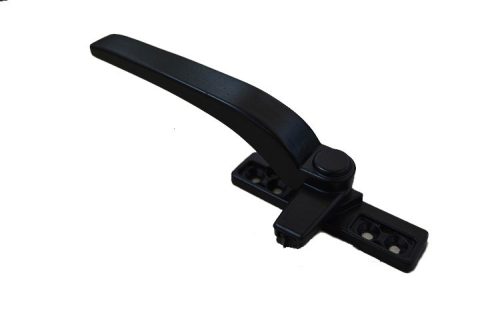Designing a plastic door handle with easy installation in mind enhances its practicality and user-friendliness. Here are some practical tips to ensure your plastic door handle is easy to install:
1. Universal Compatibility:
- Standard Measurements: Design the handle with standardized measurements for screw placements. This ensures that it fits a wide range of door types without the need for additional modifications.
2. Clear Instructions:
- Illustrated Guides: Include clear, step-by-step installation instructions with illustrations. Visual aids make the installation process easier to follow.
- Multilingual Instructions: Provide instructions in multiple languages to cater to a diverse user base.
3. Tool Accessibility:
- Tool-Free Installation: Aim for a design that can be installed without the need for specialized tools. Using common household tools like screwdrivers should suffice.
- Tool Compatibility: If tools are required, ensure that the necessary tools are commonly available and easy to use.
4. Pre-Assembled Components:
- Pre-Assembled Handles: Consider designing handles that come pre-assembled, reducing the number of components users need to put together.
5. Adjustable Components:
- Tolerances and Adjustability: Design the handle and accompanying hardware with small tolerances to account for slight variations in door thicknesses. Additionally, consider including adjustable components to accommodate different door sizes.
6. Markings and Guides:
- Screw Hole Markings: Indicate screw hole positions clearly on the handle and the packaging for accurate placement.
- Template Included: Provide a paper template that users can tape to the door to mark the precise screw hole locations.
7. Online Resources:
- Video Tutorials: Create video tutorials that guide users through the installation process. These can be hosted on your website or on video-sharing platforms.
8. Customer Support:
- Dedicated Support Line: Offer a customer support line or email for users who encounter difficulties during installation. Prompt assistance can improve user satisfaction.
9. User Testing:
- Prototype Testing: Conduct user testing with prototypes to identify any potential installation challenges or confusion.
10. Self-Explanatory Design:
- Intuitive Design: Design the handle and accompanying components in a way that their purpose is evident, minimizing the need for elaborate instructions.
11. Consideration for Different Door Types:
- Interior/Exterior Doors: Ensure that the handle is designed to work well with both interior and exterior doors, considering factors like weather resistance for outdoor installations.
- Different Materials: Account for variations in door materials, such as wooden, metal, or composite doors, when designing the handle’s installation mechanism.
Creating an easy-to-install plastic door handle enhances user satisfaction and reduces the likelihood of installation-related issues. Prioritizing user-centric design, providing comprehensive instructions, and considering a wide range of installation scenarios will contribute to the overall practicality of your product.


